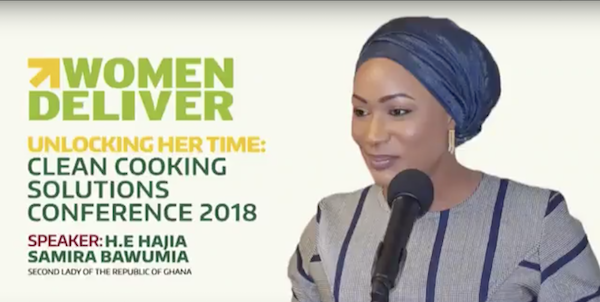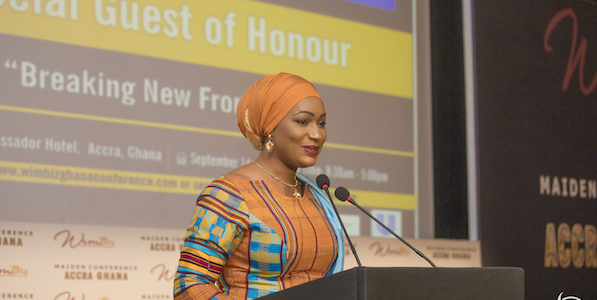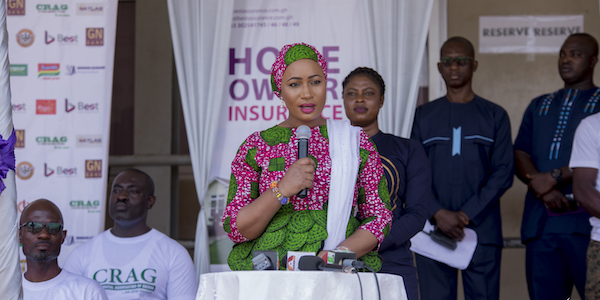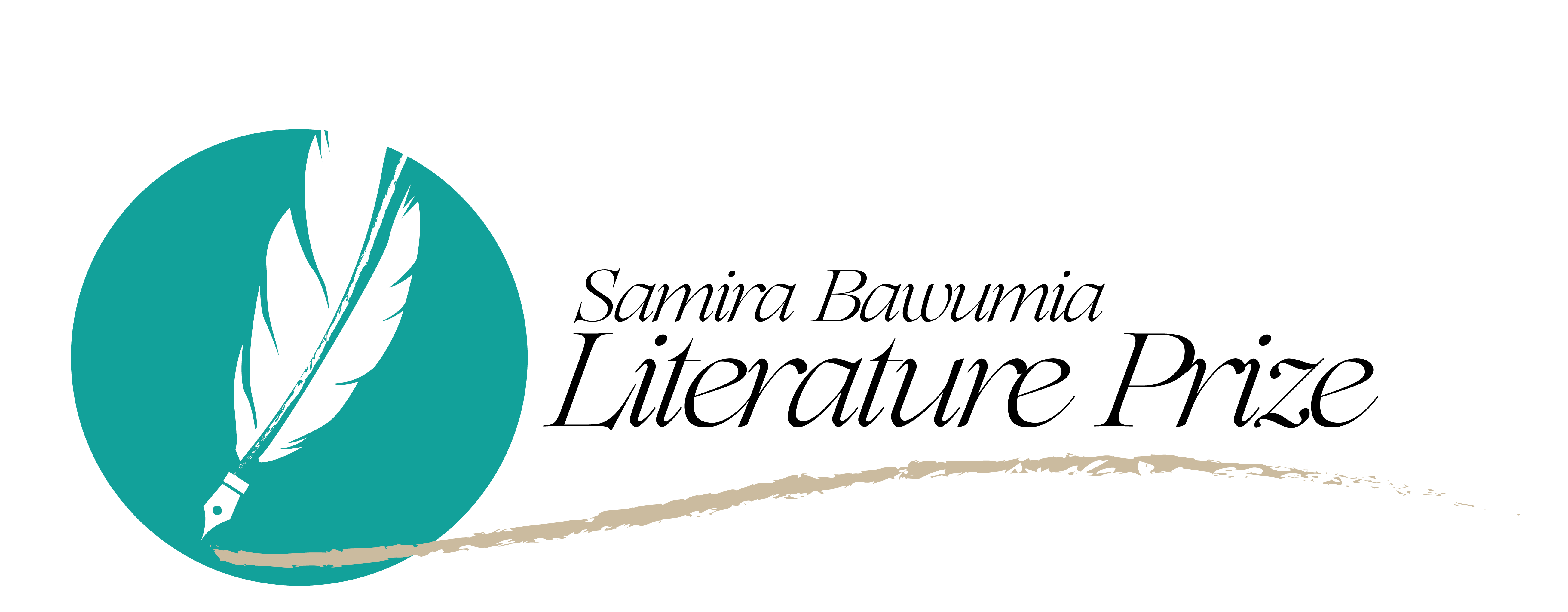Trafficking: The Reality of Violence Against Women
Mr. Gary Haugen, Chief Executive Officer, International Justice Mission, Ms. Samina Naz, Deputy High Commissioner & Head of Mission, Bangladesh High Commission, Dr. Uday Nirgudkar, Zee TV, Government Officials, Diplomats, Distinguished Ladies and Gentlemen. Good day.
I am very honored and grateful to the International Justice Mission and Maharashtra State Commission for Women, for the opportunity to be part of this very important conference. It is a joy to see various representatives of key state and non-state institutions gathered here for this conference. It is also a delight to see members of the diplomatic community with us. I trust this speaks volumes in respect of our collective determination to tackle the problem of human trafficking.
Human trafficking is, indeed, one of the worst forms of violence against women and girls. The United Nations Office on Drugs and Crimes in its “Global Report on Trafficking in Persons” revealed that two thirds of the identified victims of human trafficking were women. According to UN Women, women and girls make up 70% of all known human trafficking victims. Adult women constitute 50% of the total number of trafficked people, and 2 in 3 child victims of human trafficking are young girls.
Traffickers most often use violence to intimidate and subdue their victims, who are mostly women. The United Nations defines violence against women as any act of gender-based violence that results in, or is likely to result in, physical, sexual or mental harm or suffering to women, including threats of such acts, coercion or arbitrary deprivation of liberty, whether occurring in public or in private life. Trafficked women usually find themselves in situations with severely curtailed freedoms. Many times, they suffer extreme physical and mental abuse, including rape, imprisonment, forced abortions and physical brutality at the hands of their so-called “owners”. The victims become isolated, losing ties with their former lives and families.
We all relate better with situations and concepts that we have experienced or those we have been victims to. For instance, it is often very difficult to explain the concept of hunger to someone who has never been hungry. However, when we talk about human trafficking and its reality of violence against women, one does not need to be a victim to feel their pain or see the urgent need to fight their cause. The victims of this cruelty against humanity live with us. Irrespective of where we find ourselves on this planet, we have trafficked women and children in our midst. Through forums such as this one or the media, we hear their harrowing stories as narrated by survivors and the heart-wrenching tales of those who could not live to recount their ordeals.
One does not need to have any relationship with “Latifa, the exploited girl from Kuwait” to feel her pain and imagine the plight of the thousands of women like her, who are lured into servitude within and outside of my country. They are either overworked or used as sex slaves or sometimes they are subjected to both ordeals.
Latifa’s gripping story, as told in a Ghanaian television news feature, has all the elements of human trafficking or what can best be described as “modern-day slavery”. The young woman was promised an economic paradise and lured out of the country to take advantage of greener pastures in the Gulf region, but she returned empty handed. But even that, she was lucky to have come back alive, though deformed. She and her colleagues who find themselves trapped in the Gulf states, often have their phones and passports seized, making it difficult and in some cases impossible to run away from their masters and mistresses.
Latifa, for instance, told the reporter amidst tears, that she worked for 18 hours in a day and while preparing food for her master’s driver one night, the gas exploded and burnt her severely. Those who kept her and benefited from her labour abandoned her. Her luck was that her country’s embassy came to her rescue, helped in her treatment and flew her back to Ghana. She came with burns that were yet to heal.
Ladies and gentlemen, this is just one out of the many harrowing stories that are told of the maltreatment and violence which some unfortunate women from Ghana, Africa and most parts of the developing world suffer in the Gulf and other countries. Sometimes the victims are children who are never able to overcome the trauma and suffer the consequences for the rest of their lives. I must, however, say the gulf region is not the only culprit or destination of trafficked persons, especially women.
The US Department of States’ Office to Monitor and Combat the Trafficking of Persons has described my country, Ghana, as “a source, transit, and destination country for men, women, and children subjected to forced labor and sex trafficking.” As a source of trafficking, we have the likes of Latifa who are lured outside the country with the promise of better paying jobs. Some of the trafficked persons who find their way into Ghana have other final destinations in mind. Ghana therefore becomes a transit for such victims. As a destination of trafficked persons, law enforcement agencies have arrested and prosecuted human traffickers whose victims are transported from countries as close as Nigeria and as far as China. Unfortunately, the situation in Ghana is not significantly different from what happens elsewhere in the rest of Africa, Asia, Europe or even in America.
In 2014, the US Department of States’ Office to Monitor and Combat the Trafficking of Persons named the countries where women trafficked from Ghana were mainly taken to as Nigeria, Cote d’Ivoire, Burkina Faso, The Gambia, South Africa and Israel. The rest are Syria, Lebanon, the United Arab Emirates, Saudi Arabia, Kuwait, Russia, France, the United Kingdom, Germany and the United States. These women are often subjected to forced labour and prostitution. The sharp disparities among the nations in this list clearly point to two things.
The first point is that the destination for trafficked women and children can sometimes be more volatile or peaceful, richer or poorer than the home countries of the trafficked persons. It also shows that no continent or country is blameless in the dark global business of human trafficking. What makes the situation appear better in the developed world is, perhaps, because there are much better support systems in the developed world to combat and manage the menace than what pertains in the developing countries.
It is obvious that human trafficking is no respecter of gender, but children and women are more vulnerable than male adults. For women and girls, it is even worse because apart from the demand for their exploited labour, they are also exploited sexually. Some of the young women who returned to Ghana from the Gulf region came back with either children or pregnancies, most of which were products of multiple rapes they suffered in the lands of their servitude. Apart from the difficulty in taking care of these children and the stigma they suffer from society, such children become a painful reminder of their traumatic experiences for the rest of their lives.
I don’t think there is anybody in this room who still doubts that human trafficking is real. And I don’t think there is anyone here who still needs to be lectured on how this constitutes one of the worst forms of violence against women. The problem has been well-defined, and I wouldn’t want to bore you with what we already know. What I hope to do is to share with you how Ghana is fighting the war against the trafficking of women in particular and human trafficking in general. I also want to share with you the challenges we face, which may not be peculiar to Ghana, and what we can do together to defeat the menace of human trafficking.
The 1992 Constitution of Ghana in Article 15 guarantees the right to human dignity of all persons. Article 16 clause 1 of the Constitution provides that no person shall be held in slavery or servitude. Clause 2 of Article 16 accentuates that no person shall be required to perform forced labour. In 2005, Ghana passed the Anti-Human Trafficking Act, Act 649, for the “prevention, reduction and punishment of human trafficking, for the rehabilitation and reintegration of trafficked persons and for related matters.” The act was amended in 2009 “to redefine human trafficking and to provide for related purposes.”
Ghana also has other laws that prohibit and prescribe punishment for the trafficking of women and children as well as related offences such as forced labour and sexual exploitation. Some of these laws are the Children’s Act, 1998; the Labor Act, 2003; the Criminal and Other Offences Act, 1960 (Act 29); and the Domestic Violence Act, 2006. Ghana has also ratified related international treaties that frown on human right abuses.
A decade after the passage of the Anti-Human Trafficking Law, one can still see the elements of human trafficking as defined in the act. My country has enjoyed political stability since we returned to multi-party democracy in 1992. Even with the existence of a comprehensive legal framework against human trafficking, other forms of human trafficking are still with us. Humans, especially children and women, are recruited, transported, transferred or harboured and traded within and across our national borders. State Law enforcement agencies and non-governmental organisations such as the International Justice Mission (IJM), have collaborated to rescue hundreds of children who have been sold by their parents or guardians to fishing communities on the Volta Lake in the middle belt of Ghana.
A baseline study by the International Justice Mission which was recently launched in Ghana, revealed very alarming statistics and dehumanizing details of trafficking of children to fishing communities on the Volta Lake in Ghana. According to the report, “the 2013 operational assessment found that more than half (57.6%) of the children working on southern Lake Volta’s waters were trafficked into forced labor.” The 2015 study found that while “many perpetrators may be low-income fishermen themselves, they do not use trafficked children merely to survive. In fact, exploiting trafficked children enabled them to send their biological children to school and provide better accommodations and clothing for their own family.”
The study also cited earlier studies by state agencies that had worrying revelations. For instance, the Ghana Child Labor Survey Report, published by the Ghanaian Statistical Service found that, 25% of the children used for fishing were 5‐9 years of age, and 41% were 10‐14 years of age. The labour intensive nature of the fishing business, such as paddling canoes and diving into the deep lake to untie entangled nets, especially on the Volta Lake, makes it hazardous and illegal to engage children this young in fishing, even if they were not trafficked.
Apart from the trafficking and exploitation of children in the fishing industry, some children and young women are also trafficked from rural areas to the cities for prostitution. The likes of Latifa have also been and are still being deceived and taken out of the country to face some of the harshest treatment. This makes trafficking a very serious issue for the government and civil society groups that are working to end the phenomenon.
The US Department of States’ Office to Monitor and Combat the Trafficking of Persons put Ghana on the Tier 2 Watch List in its 2016 Trafficking in Persons Report. Even though the report raises concern about the country not doing enough to fight human trafficking, it commended the government of Ghana for “making significant efforts to do so.” The report said the government of Ghana “investigated and prosecuted trafficking and trafficking-related crimes, including allegedly fraudulent labor recruiters and suspected child traffickers, and conducted public awareness activities aimed at informing the public about the risks of human trafficking…”
The government of Ghana has, in collaboration with some countries in the gulf region, cancelled the types of working visas that allow traffickers to lure people to the gulf region. Immigration and other security agencies have also been put on the alert to rescue trafficked persons and arrest perpetrators, while various campaigns aimed at educating people on human trafficking are ongoing. The vibrant media landscape in Ghana allows victims to share their stories, by way of educating and discouraging others from embarking on such ventures.
Ladies and Gentlemen, these efforts are not yielding enough results due to the challenges involved in fighting this kind of canker. The vision of the International Justices Mission is to: “Rescue thousands. Protect millions. Prove that justice for the poor is possible.” This vision reminds me of the words of Harriet Tubman, the American anti-slavery activist, who once said, “I freed a thousand slaves. I could have freed a thousand more if only they knew they were slaves.”
The biggest obstacle in the fight against human trafficking is that the victims do not know they are being trafficked. While some are too young to understand, many of the women who are trafficked are brainwashed and deceived, and they will defend their traffickers even when they are arrested. Only, two weeks ago [July 15th], the Ghana Immigration Service announced it had rescued 150 women who were being trafficked across Ghana’s borders to be taken to the gulf regions.
As I mentioned earlier, the government of Ghana has placed a ban on travelling to the gulf region on some categories of visa. The traffickers therefore take their victims to neighbouring countries and then fly them out of the continent. Unlike the era of slave trade when the slaves were arrested and chained, now, human traffickers use deceit. They brainwash their victims into believing that paradise awaits them. The victims then see their traffickers as saviours, and security agencies, who are trying to rescue them, as demons, who stand in their way to that paradise. This makes the fight difficult.
Despite enormous media campaign and interventions by the Government of Ghana to curb the emigration of Ghanaians to the gulf region, the Ghana Immigration Service says more than 16,000 Ghanaians went to the Gulf region in 2016 alone. Many of them are often lured by fraudulent travel agents, who promise lucrative salaries for teachers, nurses and other trained professionals. Those without any professional qualification are told working as domestic helps in the Gulf region pays more than some of the most prestigious professions back home. For this reason, it becomes difficult to rescue the victims being trafficked, until the reality dawns on them in their destinations; by which time it is too late.
Human trafficking, in my view, is like any other illegal trade. It is driven by the interplay of demand and supply. The Global Slavery Index estimates that 45.8 million people are in some form of modern slavery in 167 countries. Human trafficking has become the fastest growing crime and the second largest illegal trade in the world, generating over $150 billion a year globally. The trafficking of humans to be exploited for personal and financial gain transcends borders and continues despite national and international laws prohibiting such offenses. 124 countries have criminalised human trafficking in line with the UN Trafficking Protocol. The proliferation of cross-border trafficking means that countries must work together to combat criminals and restore victims.
The adoption of the Protocol to Prevent, Suppress and Punish Trafficking in Persons, especially Women and Children by the United Nations General Assembly in the year 2000 signified a continued effort by the international community to end trafficking of humans. The emphasis on women and children speaks to the reality that they are targets for traffickers as they can be sexually exploited and are powerless to fight back. Once there is a market for trafficked persons, traffickers are in good business, but unlike other illicit trades such as the trade in narcotics, human traffickers are difficult to detect and arrest because in most cases, they don’t carry the object of their trade. It is difficult to know that a young woman who enters the airport lounge alone and goes through the departure formalities is being trafficked by another man who checked in much earlier.
Another tall and thorny hurdle in the battle against the trafficking of women is the fact that not all countries have stringent anti-trafficking and human right laws. Cooperating with such countries to fight the menace therefore becomes very difficult.
Ladies and Gentlemen, the question then is; do we give up because of these difficulties? I believe our collective answer is no! Ghanaians have a proverb that says, “when the one pursuing you has not stopped, you don’t also stop running.” We need to outrun the human traffickers.
We can only succeed if we work together. No government under the sun can win this fight alone no matter how resourceful and committed it is. The civil society or non-governmental organizations cannot succeed in this fight alone no matter how passionate and equipped they are. We need to work together. Let’s see each other as partners in the fight and not competitors fighting for glory.
Before I conclude, let me suggest what I believe are some of the most effective ways to handle the fight against human trafficking, especially of women. I’ll share another Ghanaian proverb that says the ‘best way to starve a river is to cripple its source’. The river of human trafficking is extremely vast and flows from a gushing spring of unending water. We cannot empty it by fetching the water with buckets and pouring it elsewhere. Even if we use sophisticated pumps, we may only succeed in emptying one river and creating another river elsewhere.
The best way to deal with this deadly river is to find the source and stop the water from flowing into it.
1. Let us go back to the countries we all operate. Every country or community is a source/beneficiary or a potential one for human trafficking.
2. Let us intensify education. Let us help our women to understand the dangers that await them in the lands they are being lured into.
3. Let us teach our mothers and fathers not to give their children to anyone who comes promising to take better care of them.
4. Let us educate them not to give birth to more children than they can cater for. Let us encourage and partner the media to expose human trafficking cartels and put the spotlight on their dark and inhumane activities.
5. Let us put pressure on governments, which are not committed to the international treaties on human trafficking in particular and human rights in general.
6. Let us be advocates of good governance and development and help eliminate the factors that cause desperation among people and make them vulnerable to traffickers.
7. Let us not shy away from calling this dastardly act by its real name; “modern day slavery” and marshal all forces against it.
8. Let us identify and recruit victims of trafficking to spearhead these campaigns.
I was privileged to be the Special Guest of Honour at the launch of a baseline study concerning the prevalence of child trafficking and forced child labour on the Volta Lake by the International Justice Mission in Ghana, where I was pleased to meet Kaign Christy, Field Office Director, IJM Ghana. At the launch, I proposed a “5S” strategic plan, which begins with;
• Socialization – Let us eliminate cultural practices and tendencies that encourage human trafficking.
• Sensitization – It is not enough to legislate anti-human trafficking laws. We need to create awareness about the laws and enforce them accordingly.
• Support – Let us put in place and strengthen agencies responsible for social protection, so they are properly resourced to support rescued victims of human trafficking and reintegrate them into the society.
• Supervision – There is also the urgent need to monitor offending countries; both source and destination.
• Security – We need to ensure the prosecution of those who engage, encourage and promote this unfortunate activity.
Violence against women does not only concern women. It concerns everyone, and the work to combat it must be done by all. Women around the world are the linchpin keeping families, communities and nations together. Eliminating gender discrimination and gender-based violence will enhance the dignity and human rights of women and girls.
I pledge my personal support, and the support of my NGO, Samira Empowerment and Humanitarian Projects for this cause as I go back to Ghana. It is certainly not going to be an easy task for all of us who have immersed ourselves into this war against human trafficking. But let us not be weary. Let us remember that every victory is preceded by hard work. Let us remember that it was not easy for the abolitionists who stood up against the lucrative slave trade. It was not easy for the civil rights movement in the United States, and it has never been easy for those who have stood up against any form of human indignity and injustice. After the long night of persistent, focused and strategic battle, a broad daylight of sweet victory will emerge. May we live to see the day when the backbone of human trafficking will be broken.
Thank you all so much for your attention.







